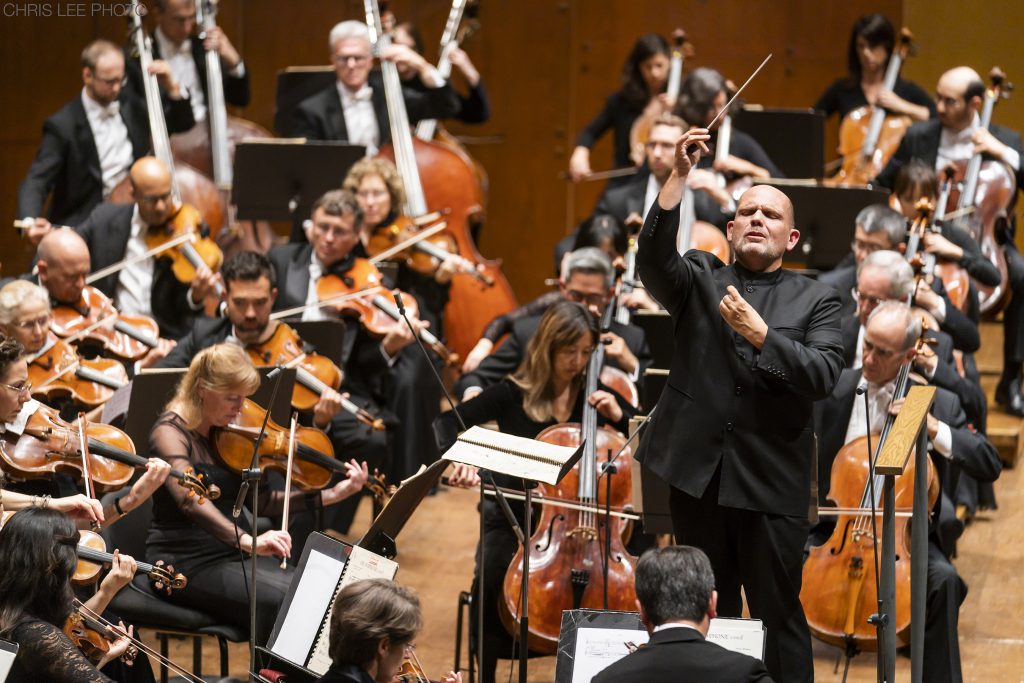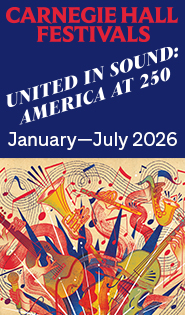Philharmonic charts a New York state of mind in long-awaited return

Jaap van Zweden conducted the New York Philharmonic Friday night in Alice Tully Hall, the orchestra’s first indoor concert in 18 months. File photo: Chris Lee
The wave of joy and relief that broke over Broadway theaters this week surged up the avenue to Alice Tully Hall Friday night, as the New York Philharmonic opened its 2021-22 season, performing for an audience indoors for the first time in eighteen months.
But instead of Broadway razzmatazz, the orchestra offered a mostly reflective program that checked so many boxes in the present-day psyche that one is still trying to count them all.
Informally titled “From Silence to Celebration”—in marketing materials, not the printed program—the evening’s music probed contemporary moods from grief to anxiety, loneliness to rage before closing with the Fourth Piano Concerto by the godfather of all darkness-to-triumph scenarios, Ludwig van Beethoven.
The orchestra’s not-soon-to-be-departed music director Jaap van Zweden—who announced on Wednesday that he would leave his post in 2024—led alert and sensitive performances of every work on the program, in which music of Anna Clyne, Aaron Copland, and George Walker displayed the orchestra’s versatility while setting the table for the concerto finale.
Daniil Trifonov was the soloist in what is itself Beethoven’s most reflective concerto, in a performance that swung freely from energetic to dreamy.
The meditative evening even included a poet: at two points Mahogany L. Browne, a community organizer and poet-in-residence at Lincoln Center, recited her own or others’ verses in support of the program’s message.
A cynic might pronounce this program politically correct: A woman composer, check. A black composer, check. Copland with an American flag onstage, check. Beethoven on opening night, check, check, check.
But that would hardly do justice to the way these pieces worked together to hold a mirror up to the audience, producing an only-in-New-York journey of the spirit from our hometown band.
Deborah Borda, the Philharmonic’s executive director, opened the evening with a bit of emceeing, praising the orchestra and its supporters for their fortitude during the pandemic. She also introduced the faded American flag on a pole downstage as the one that was displayed at Philharmonic performances during World War II and immediately after the September 11 attacks (the 20th anniversary of which had occurred six days earlier).
But thoughts of great public crises gave way immediately to individual grief, as poet Browne recited a few lines of “Message,” a poem by the Vietnamese Buddhist monk and peace activist Thích Nhất Hạnh, which provided both a message of solace and a title to Within Her Arms, the piece Anna Clyne composed in response to the death of her mother in 2008.
Fifteen Philharmonic string players stood onstage (except the cellists, of course) to perform Clyne’s delicate music of a tattered heart. Fragmentary and hesitant at first, the piece eventually summoned warm moments of remembrance and comforting layers of scales in euphonious thirds. Afterward, the British-born, New York-based composer came onstage to accept enthusiastic applause.
For his part, conductor van Zweden seemed to dodge the limelight all evening, scurrying onstage with the other musicians—or entering while they were still tuning up–and bowing briefly. Just once, following Walker’s piece, he pulled down his mask and flashed an appreciative grin to the audience.
It amused Aaron Copland that one of his best-known pieces, Quiet City, originated as a character study of a thoroughly forgotten character: the lonely trumpeter in Irwin Shaw’s ill-fated play of that title, which closed out of town in 1939.
Soloist Christopher Martin inhabited that role with burnished trumpet tone and liquid phrasing. English-horn player Ryan Roberts, in his New York Philharmonic debut, wove his part expertly through Copland’s soft, spacious string sound, emerging now and then with a singing phrase.
Both players were billed as soloists on a par with pianist Trifonov, and they performed in front of the orchestra, with their backs to the conductor. This created the impression more of a double concerto in call-and-response style than Copland’s blended, nuanced cityscape. But one couldn’t fault the beauty and sensitivity of their playing, especially Martin’s distant pianissimo in the reprise of the work’s opening bars.
George Walker, the sage of Montclair, New Jersey, had seen a lot in one African-American lifetime when he died in 2018, at age 96. But his Antifonys for chamber orchestra was very much of the turbulent year in which he composed it, 1968.
Although the title suggests ancient traditions of choirs singing to each other, this spiky, almost inchoate music stressed the “Anti“ aspect—as in anti-war, anti-racism, anti-Establishment. Friday’s smartly-executed performance captured the desultory fury of an angry crowd in rushing strings and shouting winds, studded with percussion.
It was as if Walker was doing for the 1960s what Copland’s patriotic vistas had done for the 1940s. On this occasion, the work’s significance in the era of George Floyd was also not to be missed.
To bridge the large gap between this wild music and the serene opening of Beethoven’s concerto, poet Browne gave a melodious, world-premiere reading of her new work, “A Country of Water,” finding peace and strength in her African-American heritage (“…in the sacrifices of my ancestors, I know who I am”).
The soft piano solo that opens the concerto can sound like a clear proposition to the orchestra or the player’s inmost thought. Trifonov went for the latter, but van Zweden and the orchestra took it up anyway, swinging into a lively exposition.
Taking his task seriously—perhaps too seriously, given the exuberant elaborations of Beethoven’s score—the pianist alternately bore down with fierce energy or floated off into brief contemplation. Van Zweden alertly partnered the pianist’s somewhat wayward, never-less-than-arresting performance.
The Andante con moto had plenty of moto, dropping the moony Orpheus imagery often attributed to this music in favor of a steady walking pace and a firm dialogue between piano and strings.
Van Zweden brought in the strings’ chattering finale theme without a break, molto pianissimo, and the race was on. Trifonov finally showed a mischievous sense of humor in Beethoven’s sudden changes of course. In contrast, the movement’s tender second theme had an “Ode to Joy” vibe in the orchestra, and a touch of Chopin nocturne when it was the pianist’s turn.
A typical Beethoven coda—hesitant, capricious, but ultimately brilliant—gave the audience permission at last to unleash its full delight in seeing a stage crammed with musicians after such a long absence. Joyous applause repeatedly brought back the soloist and conductor, who hung back a little and bowed modestly, as if to acknowledge this storm wasn’t just for them.
The program will be repeated 8 p.m. Saturday and 2 p.m. Sunday. nyphil.org;212-875-5656.


